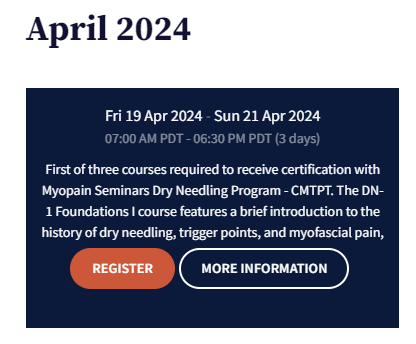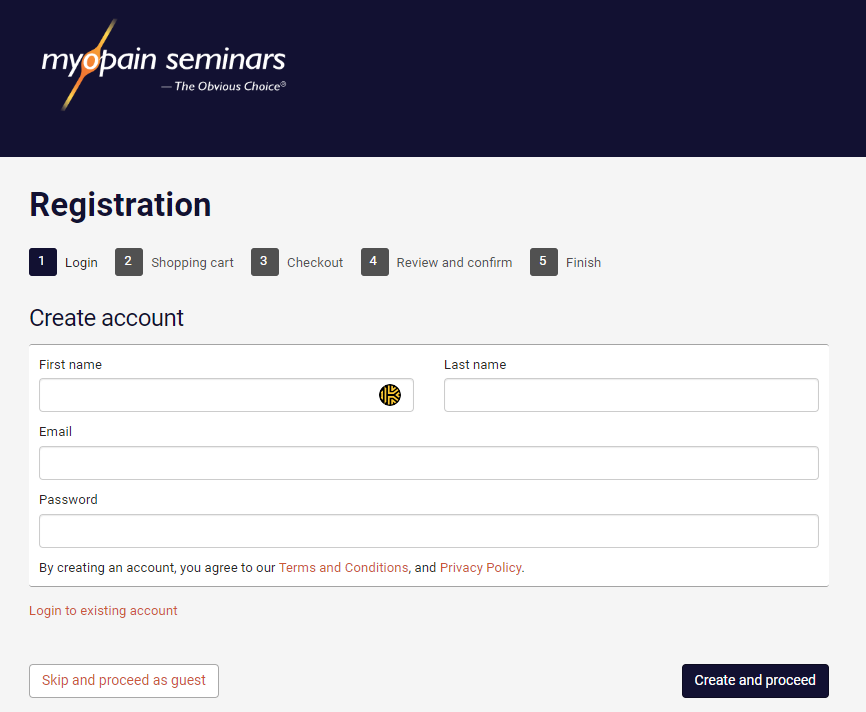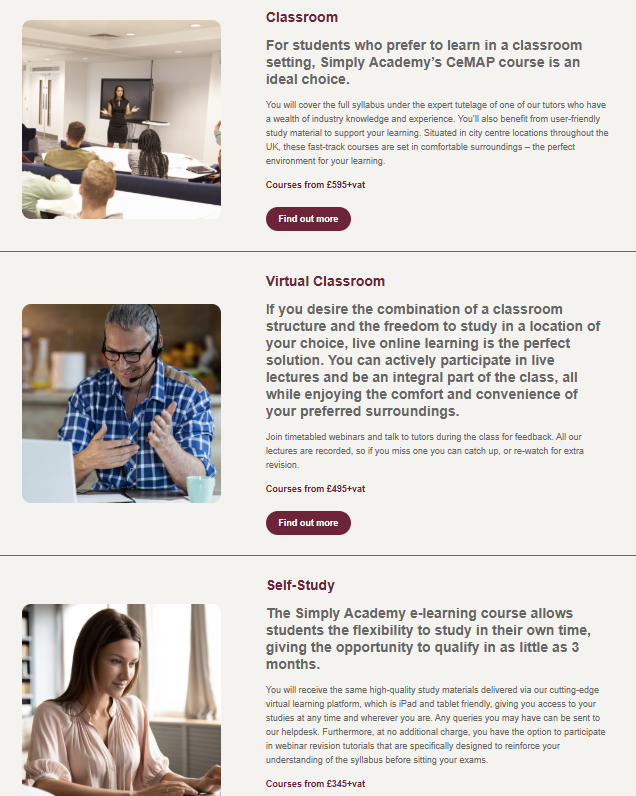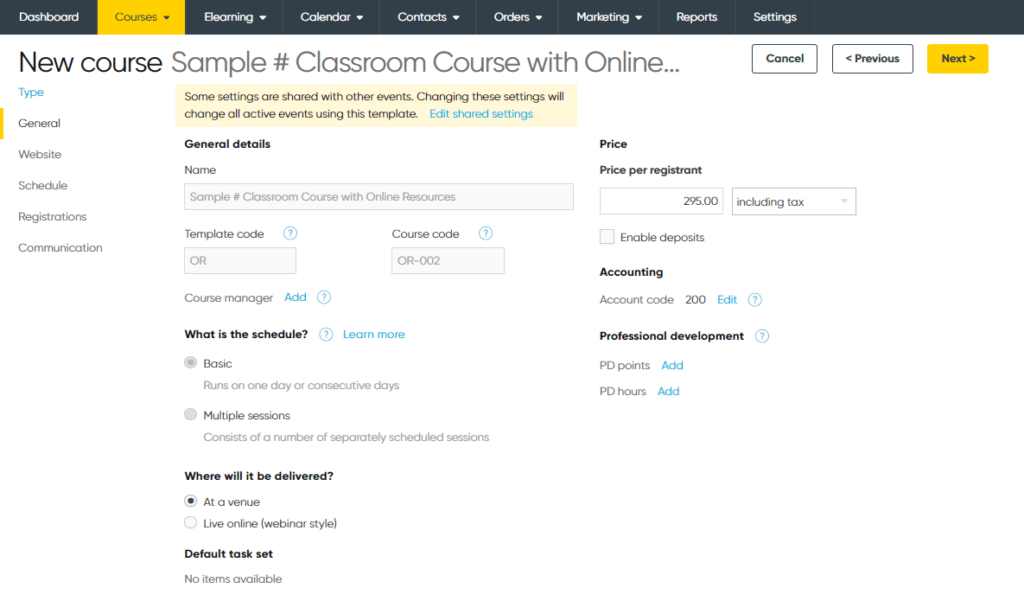Recently updated on June 23rd, 2025
The most successful training providers we work with at Arlo leave no stone unturned to make sure they’re doing everything possible to maximize their course bookings.
This includes being proactive with how they market their courses, making the booking process as straightforward as possible, and offering learners multiple payment options and flexibility over their payment terms.
In this quick guide, we look at how some of our customers are doing this and give you 7 other implementable methods that you can use to increase your course bookings in 2025.
Let’s jump straight in 👇
1. Make It Easy for Visitors to Find the Courses They Are Looking For
A simple and seamless booking process is key to attracting customers, and the booking experience starts as soon as learner lands on your website. From the moment they land you want to make sure it’s as easy as possible for them to look through the courses you offer and find the course or courses they are looking for.
You can see in this example how Arlo customer Myopain Seminars has accomplished this. As soon as a visitor lands on their homepage, they can quickly see how they can navigate to their upcoming courses.
After clicking the ‘Browse Upcoming Courses’ they are brought to an overview screen showing the provider’s upcoming courses. The visitor can then easily utilize the available dropdown menus to explore various courses of interest and filter the listings by a specific location.
From there, it’s very easy for a visitor to hover over an individual course, get a quick overview of the course content, and choose to learn more about it, or register.


The end result is that a visitor can move from landing on the website, viewing courses of interest to initiating the registration process in under five clicks – quite impressive!
Ideally, your training company website should be able to do the same. As a rule of thumb, try to keep the number of clicks it takes for a visitor to navigate from your homepage to the registration process under five, for a seamless and efficient user experience.
2. Capture All the Information You Need From Learners in the Registration Form
The registration or course booking forms you use for your courses should be appropriate to the nature of the individual course an individual is signing up for. For example, if it’s a free course a simple one-page form which captures a registrant’s name, contact details, and company name (if applicable) are most likely all you need.
Whereas a paid course you’ll need to make sure you can effectively capture a registrant’s payment details and offer flexible payment methods. This obviously should include credit card, cheque and other traditional payment methods, but also evolving options such as Google Pay, Apple Pay, and options such as AfterPay and Klarna.
Your registration forms should also be fully customizable. Meaning you can add and takeaway fields you don’t need and create custom fields.
If you want to make the most of registration forms that do just this start a free trial of Arlo, and experience flexible registration forms for yourself.
Looking for a training platform to help drive more course booking?
Try Arlo the #1 training platform for training providers
3. Optimize Your Training Website for Search Engines
As a training provider, it is essential for your website to rank well in order for potential learners to find your training program. The better your website ranks, the more learners you can help, and the more revenue you make.
Some quick search engine optimization (SEO) tips you can implement include:
1. Focus on Website Technical SEO
- Secure your website with HTTPS by installing an SSL certificate.
- Ensure your website is mobile-friendly, as most searches occur on mobile devices.
- Optimize website speed to load in 4 seconds or less to improve conversion rates.
- Use local SEO strategies, such as optimizing your Google My Business profile and maintaining consistent NAP (Name, Address, Phone) details across platforms.
2. Enhance On-Page SEO
- Target the right keywords for key pages (e.g., homepage and course pages) and integrate them naturally into meta titles, descriptions, and headers. E.g. If you’re running a project management course, make sure you’re course page is optimized for that term.
- Keep URLs clean and concise, ideally containing target keywords.
- Implement internal linking with descriptive and relevant anchor text to improve navigation and SEO performance.
3. Optimize Design and User Experience
- Update outdated website designs with clean, modern visuals that reflect your brand identity.
- Use schema markup (e.g., course schema) to help search engines better understand and display your content in search results.
4. Leverage High-Quality Content and Backlinks
- Invest in content marketing such as original research, reports, and comprehensive guides to attract backlinks from reputable sources.
- Collaborate on co-marketing initiatives such as guest posts, webinars, or joint events to reach new audiences and generate backlinks.
5. Track and Analyze Website Performance
- Use tools like Google Analytics and Google Search Console to assess website performance, identify areas for improvement, and refine your strategy.
- Regularly monitor search queries, page rankings, and user behavior to ensure your SEO efforts align with your business objectives.
4. Maximize Your Email List Through Segmentation
You’re likely sitting on a large database of contacts that contains everything from regular repeat customers, one-time customers, and those learners who may have just signed up to your mailing list or has requested more information.
If you’re sending cookie cutter emails you whole list, or worse not sending emails at all then you could be leaving business on the table. To start correcting this, begin segmenting your email list to send tailored messages to different groups, such as first-time customers, repeat customers, or those who showed interest but didn’t complete a booking.
Once you’ve done this, you can start getting more strategic around the emails you send. Here’s a few examples:
Welcome Series for New Subscribers
Purpose: Introduce your business, highlight popular courses, and offer a discount to encourage first-time bookings.
| Subject Line | Content Summary | |
|---|---|---|
| Email 1 | “Welcome! Explore Our Top Training Courses” | Briefly introduce your business and popular courses. Include a link to explore options. |
| Email 2 | “Here’s What You Can Learn With Us” | Showcase learning outcomes and benefits. Add testimonials or social proof. |
| Email 3 | “Don’t Miss Out – Get 10% Off Your First Course” | Offer a time-sensitive discount to drive bookings. Include a clear CTA. |
Re-Engagement Campaign for Inactive Customers
Purpose: Rekindle interest among past customers who haven’t booked recently.
| Subject Line | Content Summary | |
|---|---|---|
| Email 1 | “We Miss You! Come Back and Learn Something New – 15% Off Inside” | Remind them of your course value, highlight new offerings, or provide a personalized discount. |
Follow-Up for Abandoned Inquiries
Purpose: Encourage potential customers to complete their booking after showing interest.
| Subject Line | Content Summary | |
|---|---|---|
| Email 1 | “Still Thinking About [Course Name]? Here’s Why Learners Love It” | Provide course details, benefits, and testimonials. |
| Email 2 | “Complete Your Booking Today and Save 10%!” | Offer a time-sensitive incentive and include a direct booking link. |
Course-Specific Promotions
Purpose: Highlight specific courses to interested customers and boost enrollments.
| Subject Line | Content Summary | |
|---|---|---|
| Email 1 | “Advance Your Skills with [Course Name] – Save 15% Today!” | Highlight the course’s key benefits, share testimonials, and include a direct booking link. |
Upcoming Session Alerts
Purpose: Notify customers when a new session of their chosen course is scheduled.
| Subject Line | Content Summary | |
|---|---|---|
| Email 1 | “Seats Are Filling Up! [Course Name] Starts Soon” | Include session dates, availability, and a CTA to book now before spots run out. |
Related Course Suggestions
Purpose: Encourage cross-selling by offering recommendations for related courses.
| Subject Line | Content Summary | |
|---|---|---|
| Email 1 | “Loved [Course Name]? Check Out These Advanced Options!” | Highlight advanced or complementary courses and emphasize how they build on current skills. |
Automated emails, like reminders for incomplete bookings or upcoming course registration deadlines, can also help nudge potential learners toward action. There are plenty of email marketing platforms such as HubSpot, Mailchimp and others that you can use to set up your email campaigns.
But if you’re looking for a training specific platform that helps you deliver professional and timely emails to customers across the entire learner journey look no further than Arlo. Arlo enables you to use pre-set email templates, apply fonts and colors, and customize content to suit your brand.
Here’s what a typical email workflow looks like for our customers looks like:
Step One: Registration Confirmation
When a learner books a course through the customer’s website powered by Arlo, a registration confirmation email is automatically sent. This email includes the course details, such as the name, date, time, location, or webinar link.
If payment is pending, the email provides a payment confirmation or an invoice link. Pre-course materials or instructions are also included, using Arlo’s email merge fields.
Step Two: Pre-Course Communication
As the course start date approaches, automated reminder emails are scheduled at key intervals, such as 7 days, 3 days, and 1 day before the course begins. These reminders contain essential course logistics, including the time, venue, or online meeting link. They also provide links or attachments for pre-course materials and support contact details for any questions.
Step Three: Course Completion
Once the course is marked as completed in Arlo, a completion email is sent to the learner. This email includes a personalized certificate attached, created using Arlo’s template. For certifications with expiration dates, renewal reminder emails are scheduled, typically 90 days before the certification expires.
Step Four: Post-Course Feedback
A few days after the course is completed (1–3 days), a feedback survey email is sent to the learner. This automated email uses Arlo’s integrations with platforms such as SurveyMonkey. These emails can be customized to include the questions you want to ask.
Additional Extras
Many of our customers also utilize additional extras such as waitlists, discounts, and custom rules for private and public courses.
For example, waitlists allow customers to automatically notify learners when a spot becomes available, ensuring no potential bookings are missed. Discounts can be applied to specific groups, such as early bird registrations or bulk bookings, to incentivize enrollments.
Custom rules enable customers to tailor their courses, such as restricting access to private sessions.
5. Offer Your Courses In Multiple-Formats
Many of our customers maximize their course bookings by offering courses in multiple formats. This means providing learners with the option to choose a delivery method that best suits their preferences.
You can see a good example of how financial services training provider Simply Academy do this below. They offer many of their training programs in a classroom format, a virtual format, and as self-paced eLearning courses.

Offering courses in multiple formats allows you to meet the specific needs of your clients. For example, if a client prefers in-person training, you can provide classroom-based sessions or conduct training at their location. This format works well for hands-on courses where participants benefit from face-to-face interaction, live demonstrations, or group activities.
If a client has remote staff or limited availability for travel, virtual instructor-led training can be offered. This option lets participants join live sessions from any location, maintaining interaction with instructors and peers without the need for physical attendance.
For clients who require greater flexibility, self-paced online courses or on-demand training can be a practical solution.
6. Bundle Your Courses for Extra Value
A course bundle is a collection of courses, or courses plus extras, that are bundled together and sold as a package deal. Training companies might choose to break a course into multiple parts and then pitch it as a package deal.
Another opportunity is to up-sell an intermediate or advanced course to learners who’ve completed a beginner course. Or perhaps, give learners the choice to add-on valuable extras. Such as 1:1 mentoring, access to a resource library or community forum, breakout sessions, networking events and more.
Course bundles are usually offered at a discounted price (think 10% or 20% off the total value), making it appealing for learners to purchase multiple courses upfront.
For learners, course bundles are appealing because they’re cost-effective. It enables them to gain a comprehensive understanding of one subject or a variety of related subjects without having to go searching for more courses. And gives them the flexibility to pick and choose what options best suit them.
For training companies, it means an increased number of course sales. Reduced marketing costs. Higher value customers. And increased customer retention.
Case Study
International TEFL Academy increased revenue by +340% with Arlo.
7. Promote Your Most Successful Courses
If you have a training or course platform in place that allows you to track your training and monitor how your courses are performing, you can make informed decisions about which courses to promote and when to promote them.
For example, if your data shows that a particular course consistently receives strong learner feedback, high completion rates, and repeat enrollments, this course is a prime candidate for increased promotion. You could amplify its visibility by placing it prominently on your website’s homepage, featuring it in email campaigns, or running targeted ads to attract more learners.
On the other hand, if data reveals that a course has low registration numbers despite being highly rated by participants, the issue might lie in its visibility or how it’s being marketed. In such cases, you could refresh the course description to better communicate its value, add testimonials or success stories, or create targeted campaigns aimed at learners who previously expressed interest in similar topics.
Additionally, if seasonal trends are evident—for instance, if certain courses perform better at the start of the year or during specific industry certification periods—you can time promotions strategically to align with these peaks.
Some of the most common methods our customers use to promote their courses include:
Targeted Paid Advertising:
Use paid ads on platforms such as Google Ads or LinkedIn to reach specific audiences. Ads can be tailored to demographics, job titles, industries, or keywords related to your course. For example, running a Google Ads campaign for a “Leadership Skills Workshop” can capture search traffic and direct high-intent users to your course page.
Paid ads are particularly effective for promoting new or underperforming courses to your target audience.
Partner Marketing:
Collaborate with complementary organizations or industry associations to expand your reach. For example:
- Partner with a professional body to co-brand courses or offer exclusive discounts to their members.
- Work with a corporate client to promote custom training packages for their teams.
- Host joint webinars or events with partners to showcase your expertise and reach a shared audience.
Partner marketing leverages established networks and trust to attract learners who might not have found your courses otherwise.
Email Marketing Campaigns:
Use segmented email campaigns to target specific groups in your database. Examples include:
- Sending personalized emails to past participants, promoting advanced courses or certifications.
- Offering special discounts or early-bird pricing to loyal customers or newsletter subscribers.
- Reminding learners who expressed interest but did not complete a booking to revisit the course.
Email marketing is highly effective because it allows you to connect directly with your audience using tailored messages and timely offers.
8. Use a Training Management System to Create, Schedule, Deliver Training, and Manage Bookings
If you’re running regular courses, you have a few options when it comes to the software you can choose to help increase your bookings.
A basic course booking tool typically includes features like simple forms, set fields for collecting participant information, payment processing capabilities, and basic scheduling options. Some tools might also provide basic email confirmations and limited reporting functionalities.
These features can be effective for straightforward online booking needs. However, they lack the functionality needed managing complex course schedules, monitoring attendance, or tracking learner progress.
Reporting options are also often minimal, making it difficult to gain insights into performance metrics or customer trends. Integration with other software, such as CRMs or marketing tools, is usually limited, requiring manual work to synchronize data.
They’re also not built to handle the specific requirements of training providers, such as certification tracking, session management, or blended learning approaches.
Instead, we recommend using a training management system (TMS), a platform with built-in course booking features that enables training providers or businesses running regular courses to manage every aspect of course planning, organization, and delivery.
Here’s a brief overview of what a TMS can do:
1. Planning
A TMS allows you to set up your courses, in Arlo for example, you can create and publish new courses to your website in just a few clicks. Pre-designed templates simplify the process by automatically filling in key information, making it easy to schedule repeat courses across multiple dates and locations.
You can schedule one-off courses, multi-session programs, or recurring courses. Trainers and venues can be efficiently assigned within a single streamlined workflow.
Custom fields and optional extras can also be added to meet specific course requirements. The platform supports various course formats, including face-to-face, live-online, blended learning, and eLearning.

2. Registration, Payments and Administration
A Training Management System (TMS) simplifies the entire registration and payment process while streamlining administrative tasks.
Arlo, for example, allows you to create customizable registration forms that support both public and private workflows, automatically sync customer data, and handle multiple registrants and courses per order. Rules for screening, waitlists, registration limits, and optional extras like discounts or merchandise can be easily added.
Payments and invoicing are automated, with options for credit card, invoice, Google Pay, AfterPay, Klarna and bank transfer payments. The system integrates with platforms like Stripe, PayPal, Windcave, and accounting tools such as QuickBooks and Xero.
Managing transfers, cancellations, and refunds is effortless, with built-in tools to update orders, process refunds, and notify customers automatically. Registrants can also self-manage cancellations or transfers, reducing administrative effort.

3. Delivery
During delivery, a TMS automates registrant communications, generates certificates and invoices, and allows participants to manage transfers or cancellations independently.

A platform like Arlo supports attendance tracking, grading, certification management, and provides a self-service portal for participants to access their information anytime. Arlo also integrates with leading virtual classroom and webinar platforms like Zoom to help you easily run virtual, and blended training.
4. Follow-Up
After courses, a TMS automates follow-up tasks such as thank-you emails, feedback surveys, and reminders for renewals or advanced courses. It enables targeted marketing campaigns and scheduled communications to maintain engagement and drive repeat business.
Arlo also gives you access to a host of reporting features, and dashboards where you can monitor in real time. Dashboards help you view your entire training operation at a glance, including upcoming courses, registrations, and revenue.
You can drill down into details such as course availability, live sign-ups, and outstanding invoices or approvals. Monitor lead trends, track monthly performance, and stay on top of your daily tasks, all from one intuitive dashboard.
Powerful reporting tools help you take control of your business intelligence with. With Arlo, you can create tailored reports or choose from pre-built templates to analyze registrations, revenue, course profitability, and instructor performance. Schedule automated reports to share insights with stakeholders or clients, helping you make informed, data-driven decisions.
With integrations and API access, enrich your analytics to measure engagement and optimize performance, ensuring your training business thrives.
Looking for a training platform and online booking system to help you drive more registrations?
Try Arlo the #1 training platform for training providers
Increasing Course Bookings: The Final Word
Now you have clear strategies to increase course bookings and improve your training operations in 2025.
To summarize:
- Make Booking Simple: Your website should allow visitors to find relevant courses, understand the details, and register quickly. A straightforward booking process, and a comprehensive course booking system encourages more sign-ups and repeat bookings.
- Give Learners Options: Use flexible registration forms, multiple payment methods, and tools that let learners handle changes like transfers or cancellations. These features make the process convenient and user-friendly.
- Use Training Management Software (TMS): A TMS allows you to create, schedule, and manage courses at scale while automating tasks like payments, communication, and reporting. This helps you focus on running successful courses and delivering a seamless booking experience for your customers.
These strategies will help increase your online course bookings and improve how you manage your training business.